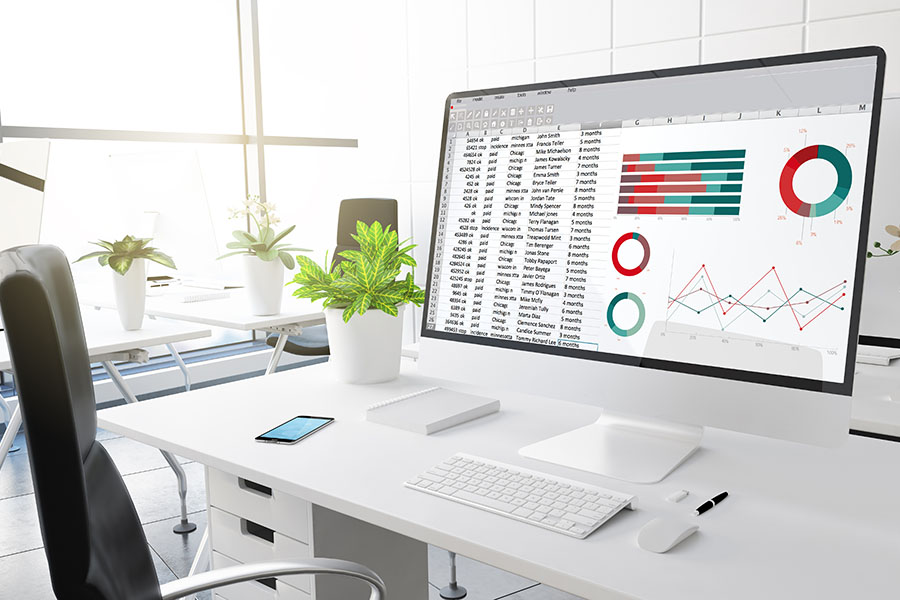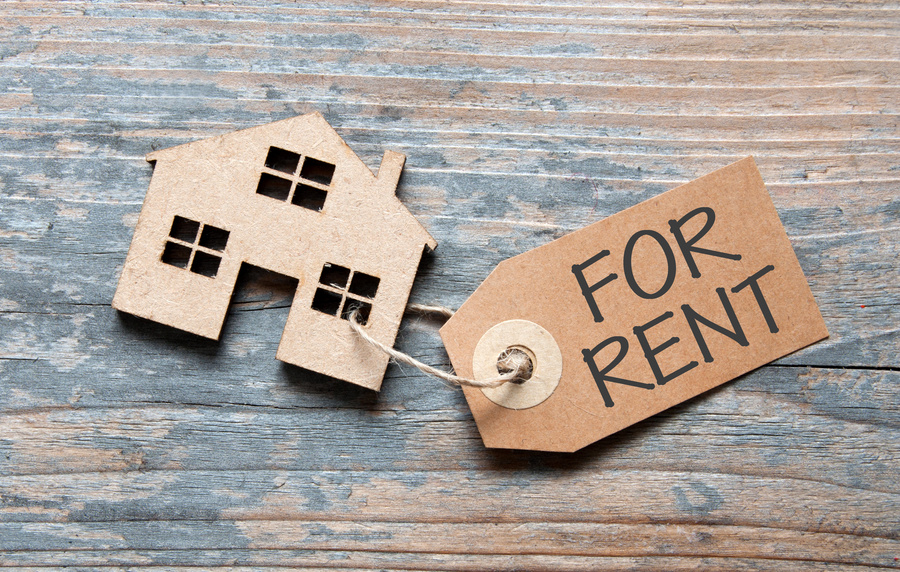
Collection letters, emails, and phone calls should all work together in a strategic way to maximize the chances of recovering a debt. Collection calls—which come after an initial email that acts as a gentle reminder and provides a paper trail—allow for a more personal touch and a chance to gather information on why the payment is late.
There’s a way to approach collections that gets you the money you’re owed, all while preserving those valuable customer relationships. In this article, we’ll break down the secret to how to make collection calls—from calling at the ideal time to navigating tricky conversations. Get ready to collect with confidence!
When to Make Collection Calls
The ideal time to make a collection call depends on a few factors. Generally, it’s best to act after payment is overdue but before it becomes a significant burden on the customer. Here are some guidelines:
- After the due date: Don’t wait months to initiate communication. Within one to three business days after the due date, consider sending a friendly email reminder. This can be a general nudge that the invoice is outstanding. For larger invoices or customers with a history of late payments, a courteous phone call around seven to 10 days past due might be appropriate.
- 30-60 days past due: This is a typical window to consider making your first collection call. By this point, it’s likely an oversight—and a courteous call can prompt payment. If your initial attempts haven’t yielded a response, consider a firmer email reminder five to seven days after the initial phone call or 14 days past due if no initial call was made. A second phone call around 30 to 45 days past due might be necessary, emphasizing the urgency of settling the outstanding balance.
- 60-plus days past due: For accounts over 60 days past due, a final email with a strong emphasis on the overdue amount and potential consequences of non-payment is warranted. If the debt remains unpaid after exhausting internal efforts, involving a professional collection agency might be necessary, especially for larger or more complex cases.
Remember, the goal is to collect the money while preserving customer relationships. Striking a balance between timely action and respectful communication is key.
Here are some additional factors to consider:
- Past behavior: If a customer has a history of late payments, you might initiate the call a bit sooner, especially if the amount is significant.
- Communication history: If the customer has already contacted you about the delay and offered a reason or timeline for payment, you can adjust your call timing accordingly.
- Customer relationship: For important or high-value accounts, a more personalized approach might be warranted. An earlier, friendly call can help to maintain a positive relationship.
- Account size: For smaller debts, a call might not be the most cost-effective approach. Consider following up with emails or letters first.
- Track and respond: Maintain a record of all communication attempts and respond promptly to any inquiries from the debtor. If assistance from a colleague is required, make sure they follow up with the customer and also do your own follow-up.
- Consider debtor preferences: If a debtor expresses a preference for email communication, prioritize that method while still following up with occasional calls.
If collection emails and phone calls are unsuccessful, you may need to send a collection letter, which highlights the late fees and potential consequences of non-payment. It also serves to document steps taken before considering legal action. Check out our guide on how to write a collection letter for helpful tips and templates.
If you’re wondering how to make collection calls, the following script balances professionalism with empathy, aiming to understand the customer’s situation while emphasizing the importance of resolving the overdue payment.
However, it’s important to keep in mind that the call may be a lot easier if you’re the owner. If you’re the bookkeeper or A/R clerk, you may have little or no power to solve the issue and instead have to pass it off to the right person while also assuring the customer that they are being taken seriously. Feel free to adjust the script as needed to fit your company’s tone and policies.
Introduction & Acknowledgment
- You: “Hi, [Customer’s Name]. This is [Your Name] calling from [Your Business Name]. I hope I’m not catching you at a bad time.”
Customer has a positive response, like, “No, not at all. What can I do for you?”
- You: “Great, thank you. I want to touch base regarding invoice [Invoice Number], which was due on [Due Date]. I noticed that we haven’t received payment yet, and I wanted to see if there’s anything I can do to help resolve this matter.”
Customer has a negative response, such as, “It’s not a good time.”
- You: “I’m sorry to hear that. I just wanted to follow up regarding an overdue invoice. Could you please let me know the best time to call back?”
Discussion
- You: “Can you please confirm if you’ve received this invoice? Sometimes emails can end up in spam folders or get overlooked.”
Customer acknowledges receipt.
- You: “I understand that payment delays can sometimes happen due to various reasons. Could you share any challenges you might be facing that are causing the delay in payment?”
Customer didn’t receive the invoice.
- You: “I apologize for that. I’ll ensure you’re sent a copy of the invoice as soon as possible. Can I confirm your email address? I’ll also follow up to make sure that you received it.”
Customer received the invoice but refuses to pay.
- You: “I’d like to understand more about why you are refusing to pay this invoice. Does it have something to do with the service (or goods) we have provided?”
Problem-solving
Customer shares a scenario, like, “Well, we’ve had some unexpected expenses come up this month, and it’s been a bit tight managing everything.”
- You: “I completely understand. We value our relationship with you and want to work together to find a solution. Would it be helpful if we discuss payment options or perhaps set up a payment plan to ease the burden?”
Customer expresses dissatisfaction with the service or product, sharing something like, “I don’t feel that the product is the quality that was promised or the services were not what we agreed upon.”
- You: “I’m so sorry to hear that you’re dissatisfied. I’ll be sure to connect you with my colleague, who will address your concerns. I will stay in close contact with them to ensure that the issue is resolved and will plan to follow up after that. Please know that your business is important to us and I appreciate your feedback.”
Customer is aggressive and refuses to discuss payment plans or options.
- You: “It seems like this isn’t a good time to talk, so I will plan to follow up with you in a few days. In the meantime, I’ll send a letter that outlines potential late fees and legal action if this issue isn’t resolved within a timely manner.”
Agreement & Next Steps
Customer responds positively, saying that would be helpful.
- You: “Great. Let’s go over some possible options together and find a solution that works for both parties. I’ll send you an email summarizing our discussion and the agreed-upon plan by [Date]. Does that work for you?”
Customer responds negatively.
- You: “If this doesn’t work for you, please feel free to suggest something that would work better.”
Closing
- You: “Thank you for your cooperation, [Customer’s Name]. We appreciate your business and look forward to resolving this matter promptly. Is there anything else I can assist you with today?”
Customer says something along the lines of, “No, that covers it. Thank you for your understanding.
- You: “You’re welcome. Have a great day, [Customer’s Name].”
Customer responds with a request for copies of invoices, purchase orders, or other billing documents.
- You: “Absolutely, I’ll be sure to have someone from our billing department send those over to you right away. Feel free to let me know if there’s anything else you need.”
Common Collection Call Scenarios
Here are some additional collection call scenarios that you might encounter, along with tips for navigating them.
Scenario 1: The Forgetful Customer
This is the most common scenario. The customer simply forgot or overlooked the invoice.
- Example: “Hi there, I’m so sorry to be so scatterbrained. I do recall receiving your invoice but completely forgot to pay it.”
- Tip: Maintain a friendly and understanding tone. Briefly explain the overdue invoice and offer to process payment over the phone if convenient.
Scenario 2: The Disputing Customer
This customer believes the invoice is incorrect or they have a reason for not owing the full amount.
- Example: “The bill seems wrong, I never received the service you’re charging for.”
- Tip: Listen actively to their explanation. Verify the invoice details and be prepared to address any discrepancies. If necessary, offer to research the issue and get back to them. This may also involve reaching out to someone with more knowledge about the problem for assistance.
Scenario 3: The Financially Strapped Customer
This customer acknowledges the debt but is facing financial difficulties and may need flexible payment options.
- Example: “I know I owe the money, but I’m facing some financial hardship right now and can’t afford the full payment.”
- Tip: Empathize with their situation. Explore solutions like a payment plan or offer alternative payment methods. The goal is to find a way for them to settle the debt while minimizing the burden.
Scenario 4: The Angry Customer
This customer is upset about the overdue invoice or the collection call itself.
- Example: “Why are you calling me about this? I already sent the payment!” (The customer might be mistaken or venting their frustration.)
- Tip: Stay calm and professional. Acknowledge their frustration and apologize for any inconvenience. Focus on resolving the issue and offer to investigate the situation if necessary.
Read our guide on extending credit if you’re uncertain about whether you should and want to learn about the best practices for doing so. Our accounts receivable best practices article may also be of interest.
Tips to Make Collection Calls Successful
There are a few things to keep in mind when making a collection call that will help to ensure your success:
- Prepare what you need for the call: Preparation is crucial. Before the call, gather account details, set goals (e.g., reminder, discuss late payment, resolve dispute), and practice using a script.
- Be professional and respectful: Maintain a friendly but firm tone throughout the call.
- Listen actively: Give the customer a chance to explain their situation and understand the reason for the late payment.
- Empathize: Recognize that financial difficulties might be the cause of the late payment.
- Focus on solutions: Collaborate with the customer to find a way to resolve the issue, such as offering flexible payment options.
- Document everything: Take detailed notes about the call, including agreements made.
- Follow up: Send an email summarizing the key points and any payment arrangements.
- Know your limits: Be familiar with debt collection regulations and consider outsourcing for complex situations.
Key Collection Call Communication Skills
The following are a few key communication skills you’ll need for successful collection calls. By honing these, you can increase your success rate in collecting payments while maintaining positive relationships with your customers.
- Clear and concise communication: Deliver your message in a straightforward and easy-to-understand manner. State the reason for your call, the amount due, and the desired outcome.
- Active listening: Pay close attention to what the customer has to say. Allow them to explain their situation and avoid interrupting. This helps build rapport and identify the reason behind the late payment
- Professionalism and courtesy: Maintain a respectful and polite demeanor throughout the call. Even in challenging situations, avoid being aggressive, condescending, or threatening.
- Empathy and understanding: Acknowledge that financial difficulties can happen. Show empathy for the customer’s situation and be willing to work with them to find a solution.
- Problem-solving: The goal is to collect the debt while preserving the relationship. Be prepared to offer flexible payment options or discuss potential disputes collaboratively.
- Positive and persuasive language: Focus on finding a resolution. Use persuasive language to encourage the customer to make a payment or commit to a payment plan.
- Effective tone of voice: Maintain a confident yet approachable tone. Your voice should convey professionalism while also being friendly and non-threatening.
Frequently Asked Questions (FAQs)
A collection call script is a pre-written guide that outlines what to say during a debt collection call. It provides a framework for the conversation, ensuring you cover important points while maintaining a professional and respectful tone. It should include an introduction, the reason for the call, a response to the customer’s situation, an outline of the next steps, and a courteous closing.
The ideal frequency depends on the situation. A general guideline is an email reminder within a few days of the due date, followed by a call around seven to 10 days past due. It is also a good idea to gradually increase communication for persistently overdue accounts.
In addition to being respectful and courteous, it is important to be mindful of timing and avoid calling too early in the morning, too late in the evening, or on weekends—unless you’ve established permission beforehand. Also, only discuss the debt with the authorized person on the account, and focus on finding solutions, not assigning blame.
If a customer hasn’t responded to your collection calls despite your efforts, you can try alternative collection methods, like sending a certified letter outlining the outstanding balance, the consequences of non-payment, and the clear deadline for response. Or, you can send a final demand letter, which emphasizes the seriousness of the overdue payment and potential consequences like late fees or credit reporting. You can also consider external options, like hiring a professional collection agency or undergoing legal action to recover the debt.
Bottom Line
By prioritizing preparation, professional communication, and a solutions-oriented approach, you can navigate collection calls effectively. Remember, empathy and respect go a long way in building and maintaining positive customer relationships, even during delicate collection situations.
Utilize the tips and strategies we outlined in this article to make your collection calls successful, minimize stress, and ultimately, get your business paid. A well-executed collection call can not only recover what you’re owed but also lay the groundwork for a trusting and long-lasting customer relationship.





